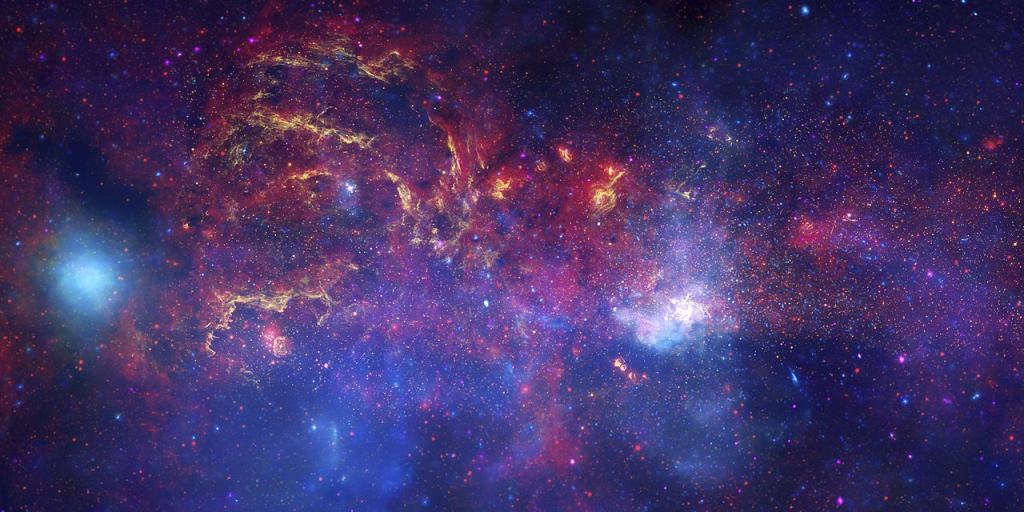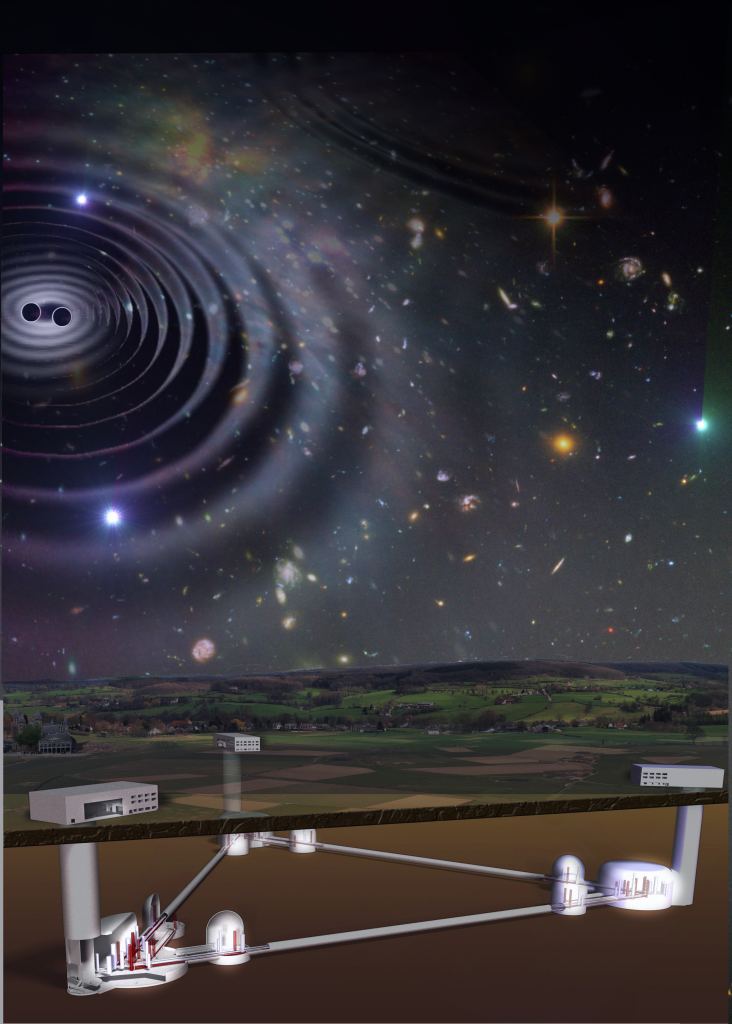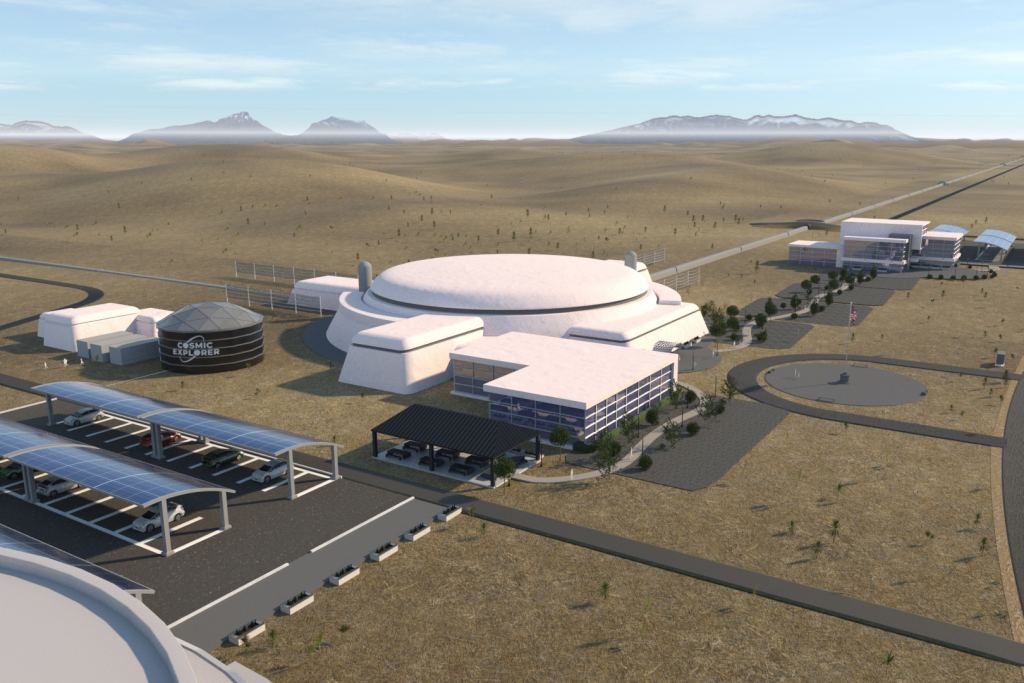Humans are born wonderers. We’re always wondering about the next valley over, the next horizon, what we’ll understand next about this vast Universe that we’re all wrapped up in.
In 2015, we finally detected our first long-awaited and long-theorized gravitational wave from the distant merger of two stellar mass black holes. But now we want to know more, and only better detectors can feed our appetite.
Whenever we discover something new, like a long-awaited answer to a fundamental question, our knowledge horizon shifts. That’s what happened with the first gravitational wave (GW.) We stopped for a moment, acknowledged Albert Einstein’s visionary scientific mind that predicted the phenomenon over a century ago, then moved on to wondering what comes next.
When it comes to gravitational waves, we’ve detected dozens of them, both confirmed and candidates awaiting confirmation. But they all have one thing in common: they’re all from stellar mass black hole mergers. That’s because Virgo/LIGO can’t detect mergers of more massive black holes. They occur too slowly.
So now the GW horizon has shifted. Now we want to detect intermediate mass black hole mergers. And to do that, we await the next generation of GW observatories: The Einstein Telescope and the Cosmic Explorer.
What’s so important about intermediate black hole mergers?
Intermediate black holes are difficult to detect. They have masses between 100 and one million solar masses. Astrophysicists have only found several candidates, based on indirect evidence. But they’re important because they’re likely the seeds for the supermassive black holes (SMBHs) at the heart of galaxies like the Milky Way.

A new paper looks at how to investigate intermediate black holes by detecting their mergers and resulting gravitational waves. It looks at two new observatories, the Einstein Telescope and the Cosmic Explorer.
The paper is “Identifying heavy stellar black holes at cosmological distances with next generation gravitational-wave observatories.” The lead author is Stephen Fairhurst, Head of the Gravity Exploration Institute at Cardiff University.
The paper focuses on detecting binary black holes with total combined masses between 100 million and 600 million solar masses. Current detectors struggle to locate these events, but the new observatories can change that.
“The next-generation of ground-based GW observatories, specifically the Einstein Telescope (ET) and Cosmic Explorer (CE, will open the prospect of detecting the GW signatures of merging BBHs over a wider
mass range and deeper redshifts, extending the realm of observations to BBHs out to z ~ 30, when the first stars began to shine, and into the intermediate-mass range of 100?1000 <solar masses>,” the paper states.
Stellar mass black holes form when massive stars collapse under their own weight. It’s also possible that in the very early Universe, when things were much more dense, gas clouds could’ve collapsed directly into black holes. That’s an example of the many things astrophysicists don’t yet know about black holes.
An important part of the study of black hole mergers is the pair-instability mass-gap.
The pair-instability mass-gap describes a gap in mass observed in pair-instability supernovae. They only happen in stars with a mass range from around 130 to 250 solar masses. We know stellar mass black holes form well below that mass range, but there’s a gap between about 65 and 135 solar masses where no black holes form.
“Some of the BBH masses we investigate reside within the so called pair-instability mass-gap (often referred to as upper-mass gap or Pair Instability Supernova (PISN) gap.) This gap is between about 65 solar masses and 135 solar masses where no BH is expected to form in evolution models of isolated stars.”
The nature and exact range of the mass gap is uncertain. Different estimates, models, and theories arrive at slightly different numbers. But it’s there, and somehow it’s related to our overarching questions about black holes, and how the SMBHs in galaxies got to be so massive.
“We discuss the impact that these observations will have in narrowing uncertainties on the existence of the pair-instability mass-gap, and their implications on the formation of the first stellar black holes that could be seeds for the growth of supermassive black holes powering high-z quasars,” the researchers write.
The Einstein Telescope is a proposed GW observatory under consideration by several nations in the European Union. It promises more precise GW astronomy.

It’s design calls for 10km long arms, compared to 4 km for LIGO. It’ll be built underground to reduce seismic noise and background noise from nearby moving objects. The Einstein Telescope will also be cryogenically-cooled. It all adds up to increased performance, and it should be able to detect GWs from intermediate mass black hole mergers.
“Exploiting the ET sensitivity and frequency band, the entire population of stellar and intermediate mass black holes will be accessible over the entire history of the Universe, enabling to understand their origin (stellar versus primordial), evolution, and demography,” the ET website claims.
The Cosmic Explorer is another proposed third-generation GW observatory under consideration by the USA. It’s conceptual design calls for two separate facilities. One will house two 40 km arms, and the other will have two 20 km arms. While other technology advancements contribute to its sensitivity, its long arms are the key driver.

“Sources that are barely detectable by Advanced LIGO, Advanced Virgo, and Kagra will be resolved with incredible precision. The resulting explosion in the number of detected sources — up to millions per year — and the fidelity of observations will have wide-ranging impacts in physics and astronomy,” the CE website says.
How will these two observatories change our understanding of the GW sky?
Both these detectors will allow us to find BH mergers in the ancient Universe. “In all cases, it is shown that next generation GW network provides a unique capability to probe high-redshift black hole formation,” the authors explain. “The most critical feature of detector sensitivity for observing these systems is the low-frequency sensitivity of the detectors.”
It’s critical because massive mergers emit GWs with lower frequencies than our current GW observatories can detect.

Nailing down the mass gap is a next critical step in understanding black holes. Will these new detectors do that? It all starts with understanding the Universe’s earliest black holes.
“The next-generation of GW detectors provide a unique way to probe the existence of heavy stellar black holes in the high-redshift Universe,” the paper states. Astrophysicicsts need to find black holes with masses above about 50 solar masses at redshift z ~ 10?15. Those BHs could be the bridge between stellar mass black holes and supermassive black holes. They’re hiding somewhere in the mass gap.
“By combining and confronting statistically all observations of both merging and accreting BHs, we will be able to shed light into the origin and evolution of the BH populations, from the stellar to the supermassive through the intermediatemass ones, across the cosmic epochs,” the authors conclude.
Gravitational wave astronomy has shifted the horizon of our knowledge. We finally detected one a few years ago, and more detections followed. A whole new window on the Universe opened. But now, as always, we want to know more.
These upcoming, more powerful and sensitive GW observatories should satisfy our hunger. For a while.
The post Next Generation Gravitational Wave Observatories Could Detect 100-600 Solar Mass Black Hole Mergers appeared first on Universe Today.
No comments:
Post a Comment